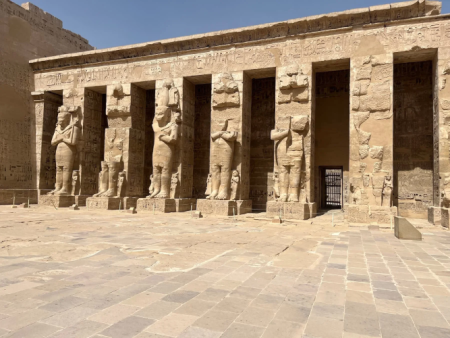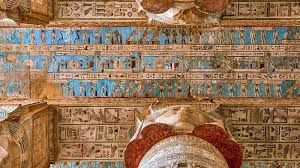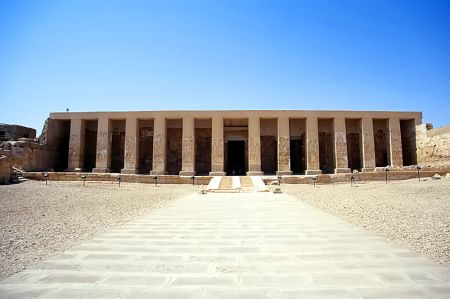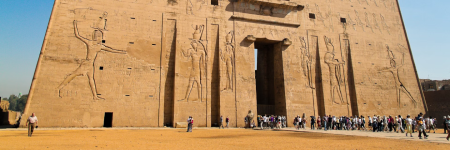Luxor Museum
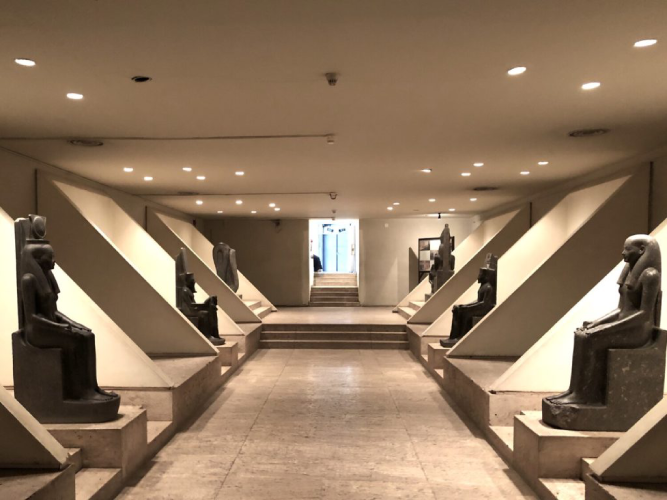
Luxor Museum: A Timeless Journey Through Ancient Egyptian Heritage
Perched gracefully on the east bank of the Nile River, the Luxor Museum stands as a treasure trove of ancient Egyptian art, history, and culture. This distinguished museum, inaugurated in 1975, is one of Egypt’s most acclaimed institutions, offering visitors an intimate yet profound glimpse into the glorious past of Thebes—the city of a hundred gates. Unlike other vast museums, Luxor Museum focuses on quality over quantity, showcasing meticulously curated artifacts that tell Egypt’s story with elegance and authenticity. Each display is masterfully illuminated, revealing the artistry, symbolism, and grandeur of ancient Egyptian civilization. From colossal statues of pharaohs to delicate jewelry and mummies, the Luxor Museum bridges millennia of human creativity and devotion. Tourists and scholars alike flock here to trace the footsteps of powerful rulers such as Amenhotep III, Thutmose III, and Ramses II, whose immortal legacies are preserved within these walls.
What makes the Luxor Museum truly captivating is its strategic location along Luxor City. Overlooking the serene flow of the Nile River, it serves as a bridge between the grandeur of ancient temples and modern-day Egypt. Its proximity to landmarks such as the Luxor Temple and Karnak Temple makes it an essential stop for history enthusiasts. Whether you’re on a guided tour, part of an Egypt Nile Cruise, or exploring the heart of Upper Egypt, the museum immerses you in the essence of antiquity.
The Architectural Elegance of Luxor Museum
Designed by the Egyptian architect Mahmoud El-Hakim, the Luxor Museum’s architecture harmonizes modern minimalism with ancient inspiration. Its simple geometric lines and open spaces ensure that each artifact commands attention, while natural light enhances the museum's tranquil ambience. The structure reflects the harmony of Luxor’s landscape—bright, airy, and deeply rooted in history. The museum’s glass façade allows visitors to enjoy stunning Nile views, connecting the exhibits inside with the eternal flow of the river that sustained Egypt’s civilization.
The museum’s interior design demonstrates an understanding of spatial storytelling. Every artifact is presented with precision, ensuring visitors grasp its historical and artistic context. The lighting design, subtle yet strategic, highlights the intricate details of sculptures and hieroglyphs without overwhelming the senses. For anyone passionate about ancient Egyptian art, this architectural masterpiece creates an atmosphere of timeless reverence and discovery.
The Upper Floor Exhibition: The New Kingdom Splendor
The upper floor of the Luxor Museum houses magnificent relics from the New Kingdom, Egypt’s golden age of empire and culture. Among the treasures are statues of Amenhotep III and his mother, Mutemwiya, standing as paragons of royal grace and divine symbolism. Each piece embodies the craftsmanship that defined Egypt’s 18th and 19th Dynasties. Visitors are also drawn to the limestone reliefs, stelae, and ceremonial objects that narrate stories of power, faith, and artistry.
A highlight is the reconstructed wall from the temple of Akhenaten at Karnak, offering rare insight into the Amarna period’s radical artistic and religious transformation. This section also includes a breathtaking array of weapons, chariots, and ritual tools used by ancient Egyptian warriors and priests, connecting visitors to the grandeur of pharaonic life. Those captivated by royal history often find ties between these artifacts and discoveries from the Valley of the Kings, where many of these rulers were laid to rest.
The Mummification Hall: Secrets of the Eternal Afterlife
One of the most riveting sections of the Luxor Museum is the Mummification Hall, a quiet yet awe-inspiring space that reveals the sacred process of preserving life after death. Here, visitors encounter two royal mummies—Ahmose I and Ramses I—whose remains symbolize Egypt’s mastery of funerary rites. The mummies are displayed with utmost respect, accompanied by the tools and canopic jars used during the embalming process.
Complementing this display are panels explaining the spiritual beliefs surrounding the afterlife, including the journey of the soul through the underworld. This hall vividly illustrates the ancient Egyptians’ profound connection between religion, science, and immortality. For those fascinated by ritual preservation, it’s a real-life reflection of the practices discussed in the seven steps of mummification.
The Ground Floor: The Story of Thebes and Its People
The ground floor offers a chronological journey through the history of Thebes, featuring sculptures and relics from the Old, Middle, and New Kingdoms. The centerpiece, a statue of Amenhotep III and the crocodile god Sobek, captures the divine harmony between man and deity. Visitors also marvel at relics from the Colossi of Memnon and the Temple of Hatshepsut, both of which form the backbone of Luxor’s monumental landscape.
The display integrates artistic, spiritual, and daily-life artifacts, including pottery, jewelry, and tools that reveal how ordinary Egyptians lived, worked, and worshiped. Each object tells a story of devotion to gods, respect for nature, and the timeless pursuit of beauty. This hall effectively bridges the royal and common worlds, showing that the soul of Egypt was not only its kings but also its craftsmen, farmers, and priests.
Lighting the Past: The Museum’s Presentation Philosophy
What sets the Luxor Museum apart is its presentation philosophy—minimal yet impactful. Each artifact stands free from clutter, allowing visitors to connect deeply with the piece. The museum’s curatorial team carefully maintains balance between aesthetic appeal and scholarly integrity. Labels are concise and informative, enabling travelers to absorb stories without distraction. Whether you’re a student, historian, or casual traveler, the museum’s design ensures a journey that feels both educational and emotional.
Visiting Luxor Museum: Practical Tips and Recommendations
Located centrally along Luxor’s Corniche, the museum is easily accessible from hotels and major attractions. It’s open daily, with evening hours extending for those who prefer exploring in softer light. Visitors can pair their visit with nearby sites like the Avenue of Sphinxes or embark on one of the many curated Egypt Excursions that highlight Luxor’s heritage. For travelers planning comprehensive itineraries, combining the Luxor Museum with Egypt Travel Packages ensures a seamless cultural experience.
To make the most of your visit, allocate at least two hours to explore the museum thoroughly. Photography is limited to preserve the artifacts, so take your time observing the craftsmanship. For those passionate about deeper exploration, consider the Egypt Luxury Tours, which often include expert Egyptologists who provide in-depth narratives about each exhibit.
Why the Luxor Museum Is a Must-Visit Attraction
The Luxor Museum isn’t just a display space—it’s a dialogue between past and present. Its compact yet powerful collection captures the essence of Egypt’s spiritual and artistic identity. Unlike the grandeur of the Egyptian Museum of Cairo or the vast halls of the Grand Egyptian Museum, Luxor Museum exudes intimacy. Visitors come face-to-face with relics that were once part of daily royal life. The museum’s calm atmosphere gives guests space to reflect, ponder, and appreciate the continuity of human civilization.
Unveiling the Legacy: A Cultural Beacon for Generations
Beyond its archaeological significance, Luxor Museum serves as a symbol of Egyptian pride and global heritage preservation. Each artifact is more than an object; it’s a living memory that connects humanity to its creative spirit. The museum’s efforts in conservation and education inspire new generations to value history and understand their roots. Its role extends beyond tourism—it reinforces the cultural identity of Luxor and its role as a beacon of human achievement along the Nile.
Frequently Asked Questions About Luxor Museum
1. Where is the Luxor Museum located?
The Luxor Museum is located on the Corniche El-Nil in Luxor City, between the Luxor and Karnak Temples. Its position along the Nile makes it one of the most scenic and accessible attractions in Upper Egypt.
2. What are the opening hours of the Luxor Museum?
The museum typically operates from 9:00 AM to 9:00 PM, with slightly reduced hours during certain seasons. Evening visits are highly recommended for a serene experience under the museum’s specialized lighting.
3. What are the main highlights of the Luxor Museum?
Key highlights include the royal mummies of Ahmose I and Ramses I, the statue of Amenhotep III with Sobek, the reconstructed wall from Akhenaten’s temple, and an impressive collection of weapons, jewelry, and ceremonial items from Thebes.
4. How long should I spend at Luxor Museum?
Visitors generally spend one and a half to two hours exploring the museum. However, those with a deeper interest in Egyptian antiquities may wish to stay longer to absorb the intricate details of each artifact.
5. Can I combine the Luxor Museum visit with other attractions?
Absolutely. The museum pairs perfectly with nearby sites such as Luxor Temple, Karnak Temple, and the Avenue of Sphinxes. Many travelers also include it in broader itineraries like Egypt Vacation Packages or Nile cruise programs for a comprehensive cultural experience.






